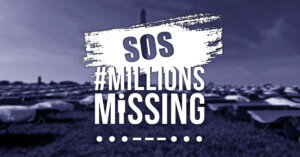You can listen to an audio-recording of Marion’s tribute on Soundcloud
One day this summer, when too unwell to step outside, I scooped a little air through an open window, surprised at its warmth. It was as if I’d bridged a greater distance than an arm’s length. Nowadays, so little can feel so much.
Once upon a time, when my granny seemed to fade away, I took leave from work and spent mornings by her bed at the old people’s home, held her hand. She slept most of the day, but whenever she woke she’d look at me with huge eyes, and smile. How simple to put love to good use!
A few years ago, my elderly mother was mugged out grocery shopping, and robbed of purse, vitality, and confidence. I was too ill to travel, and we communed with tremulous voices, the telephone astride my chest like a luckless charm. In time my hardy mum righted herself, retraced her daily routes to shops, dad’s grave, fast walks through empty fields, with fierce intent.
[pullquote align=”left” cite=”” link=”” color=”” class=”” size=””] We feel not being there when we need to be, want to be, no matter what the circumstances, as failed fidelity, incurring a debt of love.[/pullquote]The other week though, she fell and broke her pelvis. It grieves me beyond measure that I cannot sit with her in hospital, stroke her freckled fingers (usually scratched from garden work), speak soothing words. Instead we huddle on the phone again – just long enough to hear how scared she is; too short to say more than: ‘I care; I wish I could support you in other ways’.
Many of us (housebound/bedbound) worry about dear ones who are sick, infirm, or struggling, esp. if we live afar. We feel not being there when we need to be, want to be, no matter what the circumstances, as failed fidelity, incurring a debt of love. Mag, my dear departed friend, whose spirit soared until the end, well-nigh became undone when she couldn’t share her mother’s dying hours, nor attend the funeral. Such grief, such devastation, remain unbounded by communal rituals. Virtual connections can fill that space creatively, in part at least, but what about the mutual comfort of physical closeness, of touch, of holding, of whispering compassion, encouragement, maybe goodbyes, directly in a person’s ear?
Countless people have had (severe) M.E. for decades now, and although biomedical investigations are finally in progress, we still lie in wait for cure or treatment options, and grow old in turn. Some of us don’t make it…
Here, resilience is under siege. Do you see? The harm done to #pwme, through decades of neglect and stalled research, extends to our loved ones, whose burning needs we cannot meet.
I send mum jazzy cards, conjure her face in metta meditations, imagine her hand in mine. We ask each other ‘how are you?’, and fear what we’ll hear.
@marjojo2004






1 thought on “Degrees of Distance”
To me, that is the single hardest thing about living with ME and the source of the greatest grief: not being able to be there for my loved ones when they need me most. Sure, I text and send messages of love, but it’s not the same as being there to hug them and hold their hands. I don’t feel guilty, because it wasn’t my choice, but I still feel sad that I let them down.
Comments are closed.